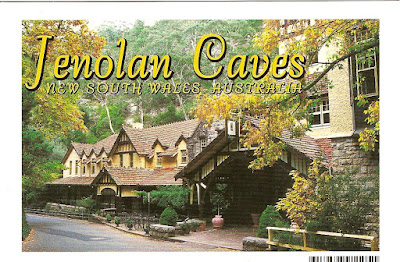Memes for Nature
"Delight in the beauty that surrounds you. Relax and take in the abundance of life. ~ Barbara Jean Olson (Inspirational-Quotations)
(Memes: My World, Watery Wednesday, Our Weekend Memoir, Outdoor Wednesday, Window Views and Doors Too, Sky Watch Friday, Weekend Reflections etc.)
 The most important attribute a photographer can have is enthusiasm.- Arnold Drapkin
The most important attribute a photographer can have is enthusiasm.- Arnold Drapkin
Mar 2, 2012
Feb 26, 2012
Yallingup Cave in Postcard
"Yallingup Cave, explored in 1899 by Messrs Dawson, Curtis and Seymour, was opened to the public in 1900. Candles and lanterns illuminated the cave until 1903 when the first electrical system was installed."Here's the story of this cave came out to be as originally knows as the Ngilgi Cave associated with rich Aboriginal legend: A Journey Through the Inner Earth as published by Bunbury, Western Australia website.
"The cave is famous for its profusion of formations especially the beautiful shawls. Strange helictites abound growing on the roof, walls and even from other formations. The stalactites hanging on tight, and stalagmites which might even reach the roof, add their own special quality to the timelessness of the cave. Dainty straws give testimony to the stability of this cave system. They manage 25mm per 100 years growth rate.
Another large section of the cave was discovered during the mid 1960's, part of this "wild cave" is used for guided adventure tours, enabling our guests to experience the thrills of caving.
Yallingup Cave, one of nature's loveliest achievements." ~Rolsh Production
Feb 23, 2012
Jenolan Caves in Postcard
Ocean Gems underneath a Giant Mountain
Types of Formation:
* Where droplets dry still clinging to the ceiling stalactites grow downwards."
*. Where droplets fall to the floor and dry stalagmites grow upwards.
* When Stalagmites and Stalactites join they form Columns.
* Where droplets flow over a ledge or down the walls they form Canopies or Shawls.
* Where drops collect in pools and evaporate they leave Pool Deposits.
* Hollow crystalline tubes are called Straw Stalactites. Helictites are small irregular growths which seem to
defy gravity. These "mysteries of the caves are seen at their best in the Temple of Baal.

THE JENOLAN CAVES were discovered in 1883 by James Whalan, a local farmer. Legend has it, that an escaped convict, James mcKeown, was also living in the sheltered valleys of the Jenolan region. No record of his capture has ever been found.
The Whalan brothers, James and Charles acted as honorary guides until the Government appointed Jeremiah Wilson as the Official Keeper of the Caves in 1886.
Known originally as the Fish River or Binda Caves, visitors would travel by train to Tarana Railway Station and here they were met by Wilson and brought by horse and buggy to the head of the valley. The last part of the journey was made by foot. Until the 1880's when the first accommodation was built visitors would camp in the Grand Arch.
Over the years, millions of visitors have passed through the nine "dark" caves open for inspection. They are: Imperial, Chifley, Jubilee, Lucas, River, Orient, Ribbon, Pool of Cerberus and Temple of Baal.
Types of Formation:
* Where droplets dry still clinging to the ceiling stalactites grow downwards."
*. Where droplets fall to the floor and dry stalagmites grow upwards.
* When Stalagmites and Stalactites join they form Columns.
* Where droplets flow over a ledge or down the walls they form Canopies or Shawls.
* Where drops collect in pools and evaporate they leave Pool Deposits.
* Hollow crystalline tubes are called Straw Stalactites. Helictites are small irregular growths which seem to
defy gravity. These "mysteries of the caves are seen at their best in the Temple of Baal.
Feb 21, 2012
Postcard Range: Orange NSW
Orange, New South Wales lies in Central Tablelands (plateau) west outside Sydney. It is known as the Colour City due to its colourful spectacles of the season occuring at autumn time. Leaves of trees, shrubberies including those in the orchards, flower plants change colours from green to mesmerizing crayons of different shades. Once, it was named as "Big Apple Country", again due to its great apple orchard plantation. It has a highly rich volcanic soil owing to the presence of an extinct volcano, Mt Canobolas. The name Orange is a misnomer of course, for it was given in honour of the Prince of Orange in Holland.
BASTICK COTTAGE - built in 1887, was the home of two generations of the Bastick family who were the caretaker gardeners, In 1973 it was offered to local art and crafts people as a place to sell their wares and the "Park Guildry" was formed. The Guildry is open 7 days a week, 10am to 4pm.
Map of Orange New South Wales
Lake Canobolas Reserve situated at the foot of Mt Canobolas is a popular swimming and recreation area.
Orange Botanic Gardens set in a natural undulating 17 hectares site. Opened in 1988 for Australia's Bicentennial.
Wheat Farm: Wheat a cereal plant, which has been cultivated for food since earliest times, is now one of the principal food crops of mankind and the most important grain crop in Australia. William James Farrer (1845-1906) produced rust-resistant wheat by long experimentation, and thus fathered Australia's wheat industry.
Moulder Park, The Colour of Autumn
Glass House of Begonias, Cook Park (Magnificent Begonias in bloom from February to May)
Subscribe to:
Comments (Atom)




















































